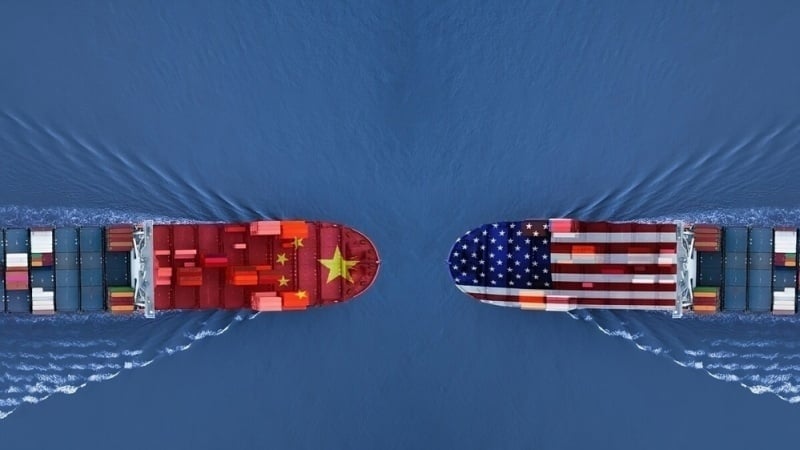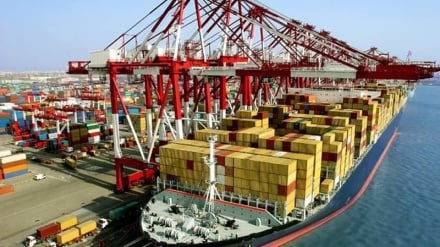Asia era: Global economic center of gravity shifts East
-

The Asia era: The global economic center of gravity shifts East
Pars Today – According to the latest forecasts from the international firm Goldman Sachs, the world economic order is on the verge of a historic and unprecedented transformation; a shift in which the ancient continent of Asia will become the main center of growth and the driving engine of the global economy, challenging the traditional Western economic powers.
For centuries, the center of gravity of the world economy has been concentrated in the West. But now, powerful signs indicate a paradigm shift and the beginning of the "Asian Century." Based on a comprehensive report from Goldman Sachs, this change is not merely a minor adjustment in market shares, but a fundamental shift in the structure of global economic power that will be fully cemented by the mid-century. This transformation will have profound implications for international trade, geopolitics, and the global balance of power in the coming decades.
The rise of economic giants; China and India on the path to overtaking the West
At the heart of this global economic transformation is the rise of two new economic superpowers: China and India. Economic models from Goldman Sachs predict that China's economy will surpass that of the United States around 2035, claiming the title of the world's largest economy. This event in itself represents a historic milestone. But the story does not end there.
India, the other Asian giant, is moving at an even more staggering pace. The country's economy is forecast to approach the GDP of the United States by 2075, reaching approximately $52.5 trillion. This means that by the second half of this century, two of the world's top three economies will be Asian. These figures are not just a numerical estimate; they represent a massive transfer of wealth, innovation, and strategic influence to the East.
Factors of unprecedented growth in Asia
The question arises: what factors have enabled this rapid growth for Asian economies? Experts at Goldman Sachs cite four key factors:
Young and active population: Unlike Western nations grappling with aging populations, countries like India benefit from a young, working-age population that can serve as the engine for sustained growth.
Massive investment in infrastructure: Asian governments are creating the necessary physical foundation for economic prosperity through major investments in transportation, energy, and communication networks.
Leaps in technology and innovation: Asia is no longer just a manufacturing hub. The continent is rapidly becoming a global center for innovation in areas such as financial technology, artificial intelligence, and clean energy.
Increasing productivity: With the mechanization of agriculture, the digitalization of industries, and improvements in educational systems, labor productivity in these countries is steadily rising.
The relative decline of the West's share in the global economy
On the other side of the equation are the advanced Western economies, whose share of the global economic pie will relatively decline. Although the U.S. and European economies will remain very powerful and wealthy, their growth rates are predicted to be slower compared to their Asian rivals. The Eurozone is projected to have a GDP of only about $30.3 trillion by 2075, and Japan's GDP will be close to $7.5 trillion.
The reasons for this slowdown can be found in the structural challenges of the West: declining population growth rates, heavy burdens of national debt, and an over-reliance on the financial services sector, which has sometimes distanced it from a production-centric model. These factors have combined to pose significant obstacles to the upward trajectory of these economies.
Geopolitical consequences and the redefinition of the global order
This economic transfer is not merely a financial phenomenon; it will shape the geopolitical destiny of the 21st century. As China and India become main actors on the global economic stage, they will naturally seek a larger role and greater influence in international institutions, the setting of trade standards, and the shaping of strategic alliances.
New trade routes, investment corridors, and international initiatives will increasingly be led by Asian powers. This signifies a redefinition of the global order and the emergence of a multipolar system where power is more evenly distributed across the world.
The Goldman Sachs forecast clearly shows that the world is on the cusp of a major transition. The Asian Century is not just a slogan; it is an imminent economic reality, built on demographic foundations, massive investments, and political will. This transformation creates countless opportunities for growth and new international cooperation, but it also requires the adaptation and deep understanding of all global actors in this changing landscape. The future of the world economy is being written in the East, and the West must prepare itself to participate in this new order.


